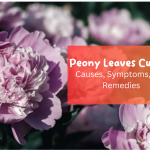Cactus plants are renowned for their ability to thrive in arid environments, with their unique adaptations helping them survive in challenging conditions. One peculiar phenomenon that can occur in cacti is known as “corking.” This natural process, also called “corking of cactus stems,” involves the formation of corky tissue on the surface of a cactus stem. This comprehensive SEO article will delve into the fascinating world of cactus corking, exploring its causes, effects, and remedies to benefit cactus enthusiasts and gardeners alike.
Understanding Cactus Corking
Corking, also known as periderm formation, is a protective response of cacti to external stressors. It typically manifests as a thickening and hardening of the outer layer of the cactus stem, resulting in a cork-like appearance. This process occurs naturally in cacti as they age, but various factors can also trigger it.

Causes of Cactus Corking
- Age
One of the primary causes of corking in cacti is natural aging. As cacti grow older, their stems gradually change, including the development of corky tissue; this is a normal part of the cactus’s life cycle and should not be a cause for concern.
- Environmental Factors
Certain environmental factors can also induce corking. Excessive exposure to sunlight, extreme temperatures, drought conditions, and poor soil drainage are some of the factors that can contribute to cactus corking. These stressors prompt the cactus to produce a protective layer of cork to shield itself from further damage.
- Physical Damage
Physical damage to a cactus stem, such as cuts, bruises, or insect infestations, can trigger the corking response. The cactus forms a protective layer of cork to prevent pathogens from entering the damaged area and facilitate healing.
Effects of Cactus Corking
Cactus corking generally does not have detrimental effects on the overall health of the plant. However, the appearance of corky tissue can alter the aesthetic appeal of the cactus, mainly if it occurs in excessive amounts or undesirable locations. In some cases, severe corking may hinder the cactus’s ability to conduct water and nutrients, leading to reduced growth or health issues.

Remedies for Cactus Corking
- Prevention
To minimize the occurrence of corking, it is essential to provide optimal growing conditions for your cactus; This includes providing adequate sunlight, maintaining appropriate temperatures, ensuring well-draining soil, and avoiding overwatering.
- Pruning and Grafting
For cacti that have developed undesirable corking patterns or excessive corky tissue, pruning can be employed to remove the affected areas. Proper sterilization of cutting tools is crucial to prevent the spread of diseases. In some cases, grafting can be a viable option to rejuvenate a cactus by attaching a healthy scion to a corked stem.
- Environmental Adjustments
If environmental factors primarily cause the corking, it is vital to make necessary adjustments to provide a more favorable growing environment for the cactus; This may involve relocating the cactus to a spot with more suitable light conditions, providing shade during scorching summers, or improving soil drainage.
- Caring for Wounded Stems
If a cactus stem has suffered physical damage, prompt action is required to prevent infection. Clean the wound with a diluted hydrogen peroxide solution, allow it to dry, and apply a suitable fungicide or antimicrobial agent to prevent the entry of pathogens.
Conclusion
Cactus corking is a natural phenomenon in response to aging or various environmental and physical factors. While it may affect the aesthetic appeal of the cactus, it is generally not detrimental to its overall health. By understanding the causes and effects of corking and employing appropriate remedies when necessary, cactus enthusiasts can ensure the well-being of their beloved plants and maintain their beauty for years to come. Read article about Etiolation Cactus and Albo Syngonium in Avi Hoffman Garden.
FAQ
When you notice corking in your cactus, there are a few steps you can take:
Evaluate the growing conditions: Ensure your cactus receives adequate sunlight, appropriate temperatures, and well-draining soil. Make adjustments if needed to provide an optimal environment.
Prune affected areas: If the corking is excessive or in undesirable locations, use sterilized cutting tools to prune the affected areas carefully. This helps improve the aesthetic appeal of the cactus.
Consider grafting: In severe cases where corking affects a significant portion of the cactus; grafting can be an option; This involves attaching a healthy scion onto the corked stem, allowing for new growth and rejuvenation.
Care for wounded stems: If the corking results from physical damage, clean the wound with a diluted hydrogen peroxide solution, let it dry, and apply a suitable fungicide or antimicrobial agent to prevent infection.
Corking itself is okay for cacti. It is a natural response to aging or external stressors. While excessive corking may affect the aesthetic appeal of the cactus, it generally does not harm the plant’s overall health. However, severe corking can impede the cactus’s ability to conduct water and nutrients, potentially leading to reduced growth or health issues. It is crucial to monitor the plant and take appropriate actions if necessary.
Corking in plants, specifically in cacti, refers to the formation of corky tissue on the surface of the stem. It is a natural process that occurs as the plant ages or responds to environmental factors such as excessive sunlight, extreme temperatures, drought conditions, or physical damage. Corking serves as a protective response, helping the plant shield itself from further damage and facilitating healing.
When a cactus molds, it typically indicates an issue with excessive moisture and poor air circulation. Mold growth on cacti is commonly caused by overwatering or high humidity levels. Mildew appears on the cactus’s surface as fuzzy or powdery patches of various colors, such as white, gray, or black. It can be harmful to the plant if left untreated, as it can lead to rot and other fungal infections. To address mold issues, it is essential to reduce moisture levels by adjusting watering practices, improving ventilation, and ensuring proper soil drainage. Additionally, affected areas can be treated with a suitable fungicide to combat mold growth.







